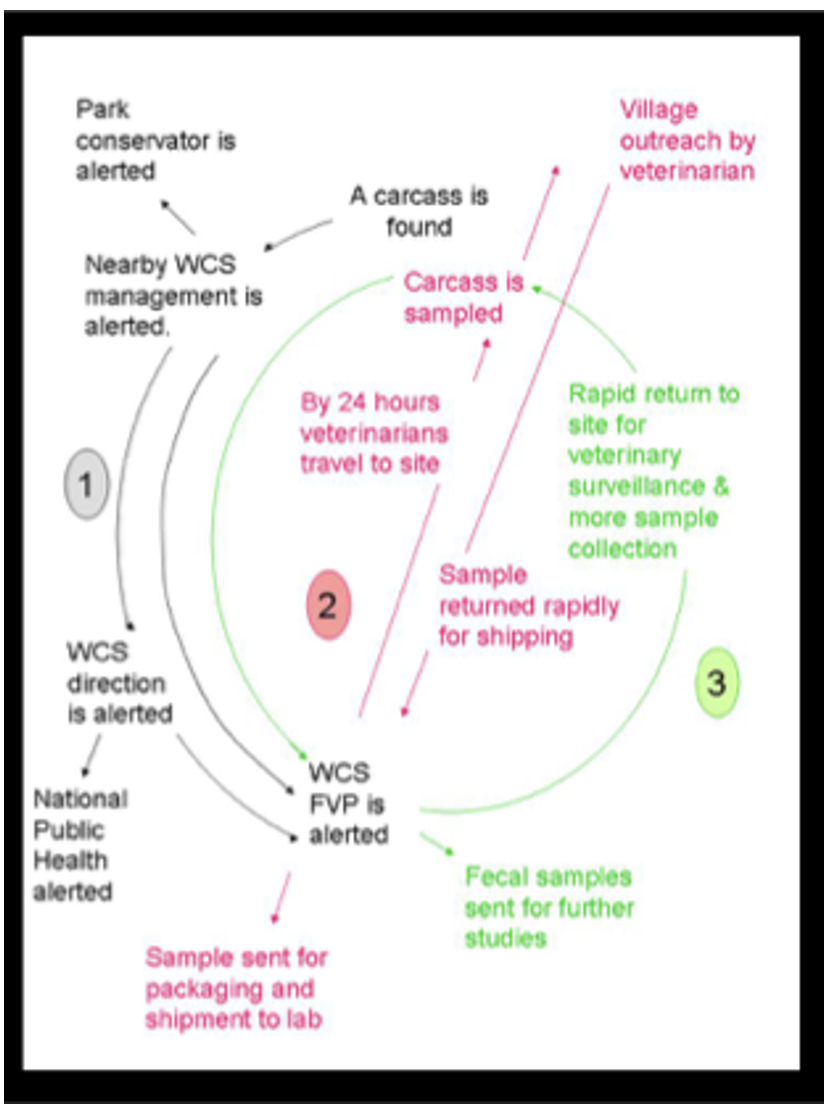

Components of the system involved mortality reporting by hunters and community members, investigation of reports by veterinarians trained on specimen collection and handling protocols, specimen transport to national laboratories, and laboratory screening for disease diagnostics. Each of these involved specialized inputs, but the coordination between entities created the system. Information management and communication were conducted throughout the process. A Carcass Data Collection and Reporting Protocol was integral to the process, ensuring consistent reporting.
- A local team, supported by a global program, ensured continuity of the broader Animal Mortality Monitoring Network and technical expertise to develop and implement disease investigation protocols
- Full integration and support of Congolese government officials from multiple ministries helped prioritize the animal-human link for public health and conservation outcomes
- Availability of functional national and international laboratories and the ability to move specimens rapidly, including from remote areas, supported diagnostics in endangered species
In this setting, hunters and some community members were the key eyes on the ground for wild animal mortality detection, having some of the only human presence in forest areas where carcasses may degrade rapidly, providing a limited window for detection and investigation. While the overall Animal Mortality Monitoring Network included a broader scope of reporting, only reports meeting certain criteria (such as being a great ape species, the extent of carcass degradation, and other factors) prompted disease investigation, keeping the scale of the program feasible and cost-effective. Unfortunately, despite its demonstrated value, sentinel detection in wild animals is not routinely a formal part of public and animal health surveillance in many parts of the world, missing a critical source of potential information that could promote early warning for disease threats in humans and other species. Training was also an important component of the project, including on biosafety protocols for safe disease investigation and diagnostic screening.